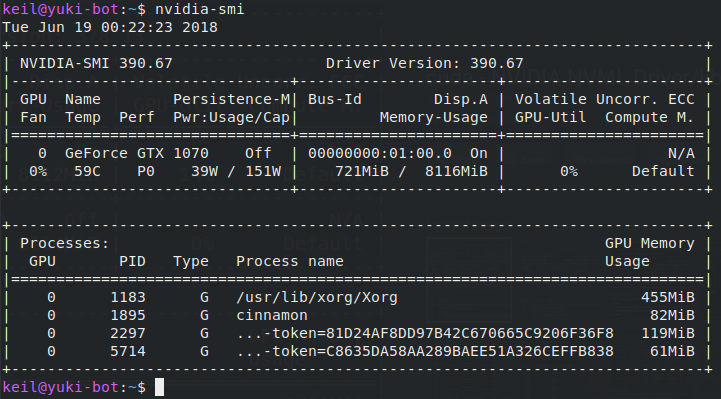

- CHECK NVIDIA CUDA TOOLKIT VERSION .EXE
- CHECK NVIDIA CUDA TOOLKIT VERSION INSTALL
- CHECK NVIDIA CUDA TOOLKIT VERSION DRIVERS
- CHECK NVIDIA CUDA TOOLKIT VERSION DRIVER
- CHECK NVIDIA CUDA TOOLKIT VERSION UPGRADE
cuDNN provides highly tuned implementations for standard routines such as forward and backward convolution, pooling, normalization, and activation layers. The NVIDIA CUDA® Deep Neural Network library (cuDNN) is a GPU-accelerated library of primitives for deep neural networks.
CHECK NVIDIA CUDA TOOLKIT VERSION INSTALL
The last step is to install the cuDNN libraries. The following shows the output of my Quadro P1000 card. deviceQuery, it will tell you whether the CUDA works.
CHECK NVIDIA CUDA TOOLKIT VERSION .EXE
exe file automatically under C:\ProgramData\NVIDIA Corporation\CUDA Samples\v11.2\bin\win64\Debug\deviceQuery.exe.Īfter build completion, it should report the following output:
CHECK NVIDIA CUDA TOOLKIT VERSION UPGRADE
I am using the 11.2.0 version and I think it should be fine for 11.2.1 and 11.2.2 as they are minor upgrade to the 11.2 version.Īnd the file is huge (2.8GB), so take a break.Īccording to Wikipedia, CUDA (or Compute Unified Device Architecture) is a parallel computing platform and application programming interface (API) that allows software to use certain types of graphics processing unit (GPU) for general purpose processing – an approach called general-purpose computing on GPUs (GPGPU). As of Dec 2021, TensorFlow only supports CUDA 11.2 or older version. Don’t click “Download Latest CUDA Toolkit” as it typically will not give the right version for your system. It is a must that you download the version which supports your Python and TensorFlow versions. Navigate to the CUDA supporting website and download the CUDA Toolkit for your system.
CHECK NVIDIA CUDA TOOLKIT VERSION DRIVER
After download the driver file, just follow the screen instructions to install the driver for your card. The file size is more than 500MB, so it may take a few seconds. Go to NVIDIA’s download website and download the driver for your video card. You may not use it but it comes with the C++ compiler which is required to drive the GPU support. Visual Studio is a very powerful Integrated Development Environment (IDE) for programmers. Just go to the Microsoft website and download the Visual Studio 2019 or newer version (as of Dec 2021, it is version 2022). Install the Microsoft Visual C++ (MSVC) compiler
CHECK NVIDIA CUDA TOOLKIT VERSION DRIVERS
To drive the card, we need to install the CUDA drivers and the cuDNN libraries. GPU support requires a CUDA®-enabled card. Check the required CUDA and cuDNN version

Type python -c "import tensorflow as tf print(tf._version_)" in your command shell and it should output the version number if you have installed the TensorFlow. My Python version is from Anaconda which is 3.8.5. As of Dec 2021, Tensorflow 2 supports Python 3.7 - 3.9. In your command shell (Anaconda Powershell if you use Anaconda for Python), type python -version to show the version of your installed Python. You may also check the list of CUDA®-enabled GPU card here. My card is an entry level card: NVIDIA Quadro P1000 with 4GB dedicated GPU memory. To check your computer’s video card info, just go to Task Manager by clicking Ctrl + Alt + Del. Before the installation, we need to check the following things: Check your CUDA®-enabled GPU card info


 0 kommentar(er)
0 kommentar(er)
